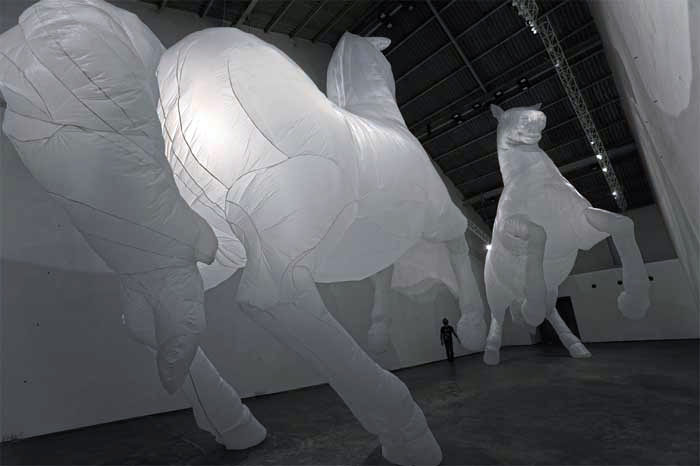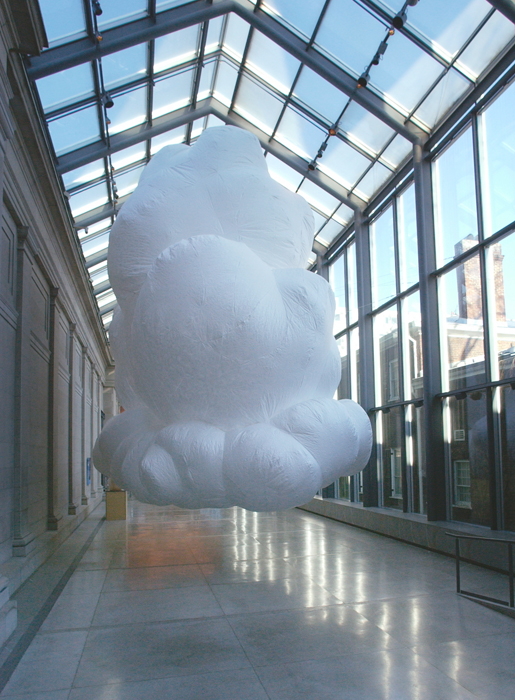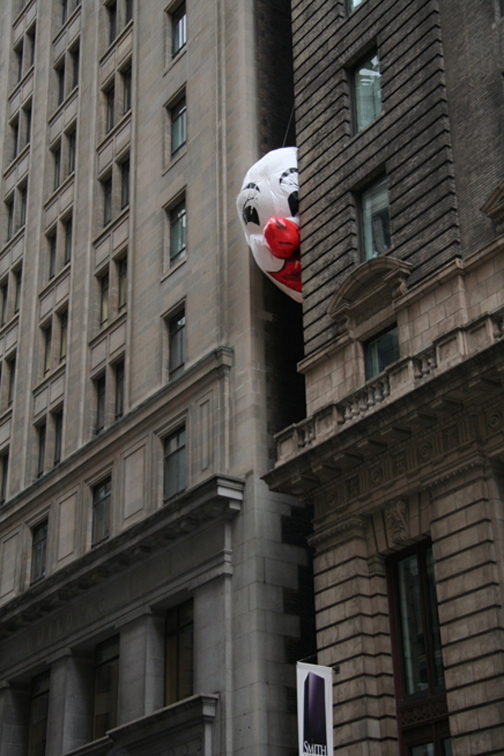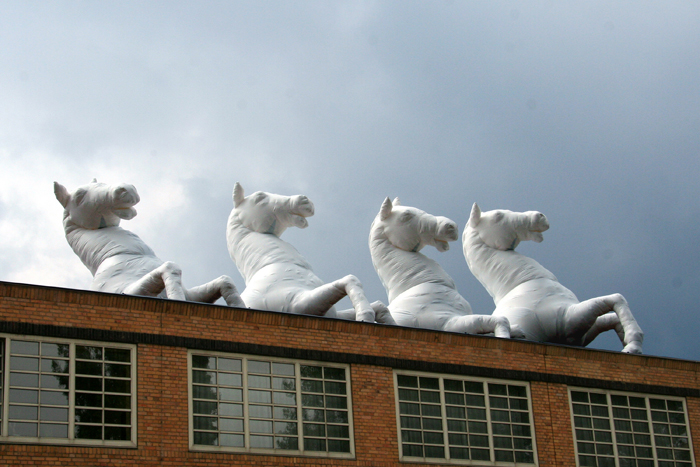Max Streicher
Max Streicher is a sculptor and installation artist from Alberta, now residing in Toronto. Since 1989 he has worked extensively with inflatable technology in kinetic sculptures and installation works. He has shown widely across Canada in solo exhibitions in museums such as The Art Gallery of Ontario, Edmonton Art Gallery and the Mendel Art Gallery in Saskatoon. He has been part of group exhibitions at the Museum of Contemporary Art, Taipei, the Museum of Contemporary Canadian Art, Toronto, the Saidye Bronfman Centre, Montreal, Power Plant Centre for contemporary Art, Toronto and Southern Alberta Art Gallery in Lethbridge. He has completed several international site-related projects in such places as Taichung, Taiwan, Erfurt, Germany, Reims, France and Aachen, Germany, Madrid, Spain and Mumbai, India. His inflatable works are in the collections such as that of the ESSL Museum, Vienna, and Beaverbrook Art Gallery, Fredericton and the University of Toronto. He was a founding member of the NetherMind collective of artists who have organized several sculpture exhibitions in alternative spaces in Toronto. Max Streicher is represented by Ponce+Robles in Madrid, Galerie Miguel Marcos in Barcelona, Gallery Maskara in Mumbai, India, Felix Ringle Galerie in Düsseldorf and Ricco/Maresca Gallery in New York.
Artist Statement
“Inflatables have had an important place in my work since 1989. In most of these sculptures and installations I have used industrial fans and simple valve mechanisms to animate sewn forms with lifelike gestures. Most of these works have been made of lightweight and papery fabrics such as Tyvek or nylon spinnaker. The weightlessness of these materials allows them to respond with surprising subtlety to the action of air within and around them.
Generally inflatables are an expression of naive optimism. In an art context they signal popular culture, anti-art and irony. I play with and against these expectations. The movement of air within my forms recalls our own sensation of breath—of breathlessness, of holding our breath, etc. My work exists in moments of kinesthesia, when the movement of air within a form causes something to stir within the physical being of the viewer. This response is to more than just the obvious action of inflation and the robust occupation of space. What I feel is even more moving is the recognition of deflation, shrinking, vulnerability, silence and dying. My choice of extremely light and papery materials enhances this sense of absence and transience, of the nearly not there at all. Thus, the awakening comes more in our awareness of the tenuousness and fleeting nature of our existence. My work with the inflatable medium is about moving the viewer from a playful and ironic headspace toward a physical connection to his or her most vital forces. “




